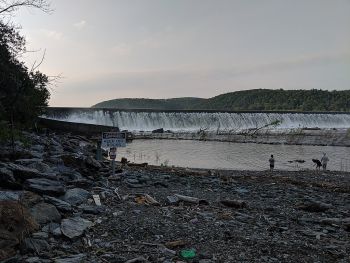Concrete/Masonry Dams: Difference between revisions
From ASDSO Dam Safety Toolbox
No edit summary |
No edit summary |
||
| Line 3: | Line 3: | ||
|image= | |image= | ||
<!-- Add image file name (ex.image.jpg) --> | <!-- Add image file name (ex.image.jpg) --> | ||
holtwood. | holtwood.jpg | ||
|link= | |link= | ||
<!--https:// | <!--https://en.wikipedia.org/wiki/Holtwood_Dam--> | ||
|caption= | |caption= | ||
<!-- Add picture caption --> | <!-- Add picture caption --> | ||
Photograph of Holtwood Dam, a concrete/masonry dam located along the Susquehanna River in south central Pennsylvania. ( | Photograph of Holtwood Dam, a concrete/masonry dam located along the Susquehanna River in south central Pennsylvania. ([https://en.wikipedia.org/wiki/Holtwood_Dam Wikipedia]) | ||
}} | }} | ||
Revision as of 20:50, 13 September 2022

|
| Photograph of Holtwood Dam, a concrete/masonry dam located along the Susquehanna River in south central Pennsylvania. (Wikipedia) |
Concrete/Masonry Dams are constructed as either gravity dams, buttress dams, or arch dams depending on how they maintain structural stability. Concrete dams can be constructed using either conventional concrete or roller-compacted concrete (RCC). Masonry dams are constructed using stone, brick, or other masonry units joined together using mortar. Construction of masonry dams are labor-intensive and are less commonly used in modern dam construction than other types of dams.
Types of Concrete/Masonry Dams
Best Practices Resources
Citations:
Revision ID: 2872
Revision Date: 09/13/2022
